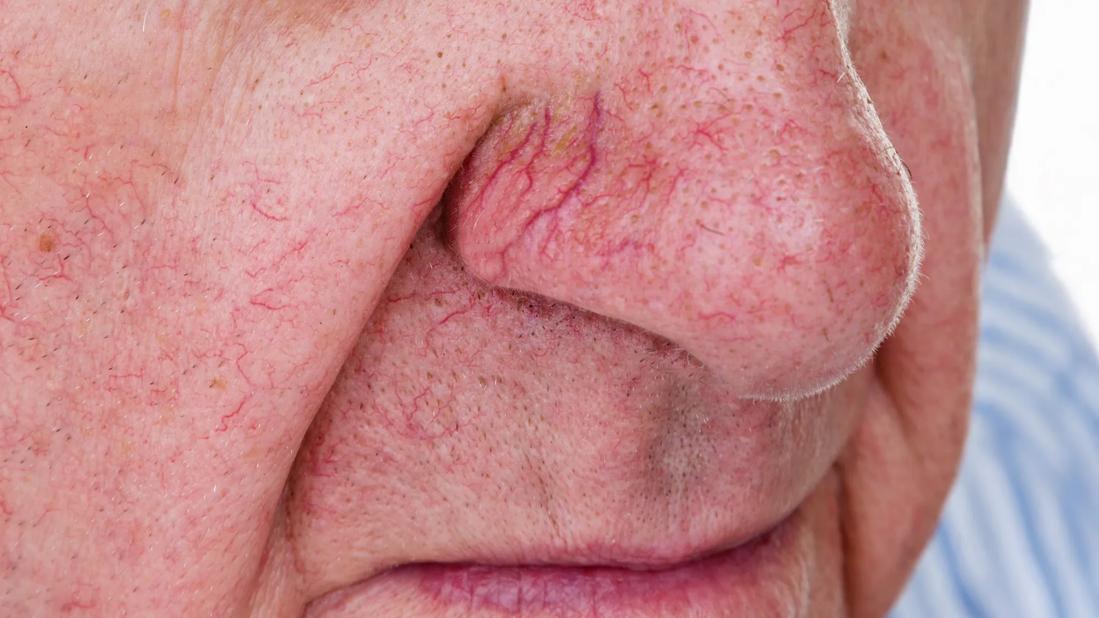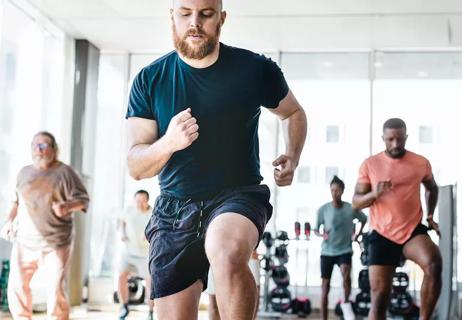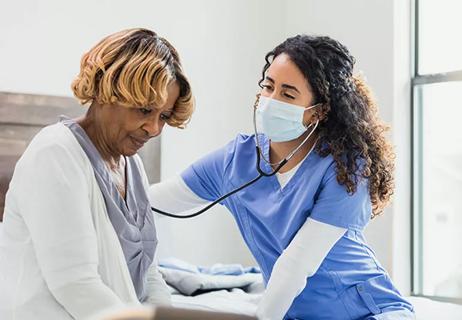At-home options aren’t your best bet — instead, consider noninvasive laser treatments with a dermatologist

Spider veins (telangiectasias) can become more common as you age. While you may notice these teeny-tiny blood vessels on your legs, you may also start to see them on your face. These red, blue or purple clusters that look like spiderwebs (or even tree branches) tend to appear along your cheeks and nose.
Advertisement
Cleveland Clinic is a non-profit academic medical center. Advertising on our site helps support our mission. We do not endorse non-Cleveland Clinic products or services. Policy
Though they aren’t usually a cause for concern from a medical perspective (and rarely cause symptoms), facial spider veins can impact your appearance and affect your confidence. A dermatologist may suggest cosmetic treatments like laser therapy to help reduce their appearance.
The most common cause of spider veins is sun-damaged skin (photoaging), says dermatologist Christine Poblete-Lopez, MD.
Some other known causes of telangiectasias on your face include:
Women are more likely to experience spider veins than men, and spider veins become more common after the age of 80.
Other risk factors include:
Certain lifestyle changes can prevent spider veins from forming. Dr. Poblete-Lopez recommends that you:
Advertisement
“As the most common cause of spider veins is photoaging, or sun exposure and aging, the former is within our control,” notes Dr. Poblete-Lopez. “We can do this by protecting our skin from the sun on a daily basis, and not only when we’re going out. The other recommendations are also all within our control — and keeping your body healthy includes keeping our skin healthy.”
Unfortunately, you can’t get rid of spider veins at home. (At-home options like applying a cold compress or using a cold face roller may provide temporary results, if any.)
Your best bet to get rid of those facial spider veins — and the only real way — is by paying a visit to a dermatologist’s office.
Your doctor may recommend a noninvasive laser treatment that specifically targets vessels, heats them up and causes them to collapse. But it’s not a quick fix.
“We’re not talking about a one-time treatment. Telangiectasias would require laser therapy for three to four sessions every three to four months,” stresses Dr. Poblete-Lopez. “After that, you would need a touch-up treatment every six months to one year as needed.”
Yes, it’s possible for spider veins to reappear on your face, says Dr. Poblete-Lopez.
“Undergoing a laser treatment doesn’t mean we’ve gotten rid of your spider veins,” she explains. “We’ve merely closed the blood vessels down, and they can reopen.”
Spider veins on your face are typically harmless. But if seeing those colorful clusters of broken capillaries on your face makes you unhappy, there are ways to reduce their appearance.
Talk to your healthcare provider or dermatologist to discuss which lifestyle changes or treatment options may be best for you.
Advertisement
Learn more about our editorial process.
Advertisement

Blood flow can benefit from leg elevation and even low-impact exercise, like walking

Here’s what you need to know about managing your heart health

Early attention to skin wounds can help minimize their appearance later

Several conditions, like vitiligo and fungal infection, can cause a loss of pigmentation, leading to white spots or patches on your skin

Moisturizing, running a humidifier and adjusting your showers may help keep itchiness and irritation at bay

‘Zit stickers’ can help heal a new or popped pimple, but they’re limited when it comes to managing acne

Glycolic acid benefits skin tone, texture and pigmentation by exfoliating dead skin

At-home treatments and lifestyle changes may help ease the symptoms and improve the appearance of varicose veins — but they aren’t a cure

The best parenting style balances enforcing rules and showing plenty of love

Tips include cutting back on sugar, focusing on exercise and managing stress

It can be harder to let go when you’ve invested time, energy and emotions — but it might be the healthier choice long term